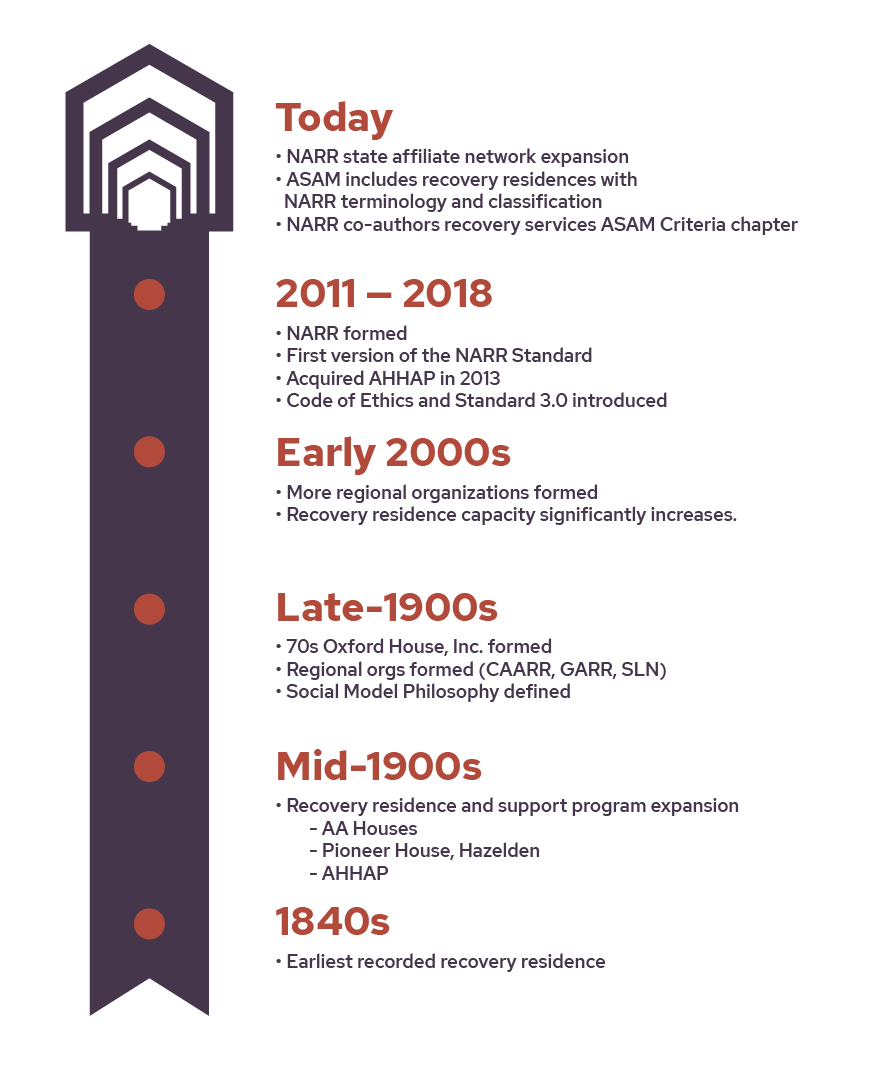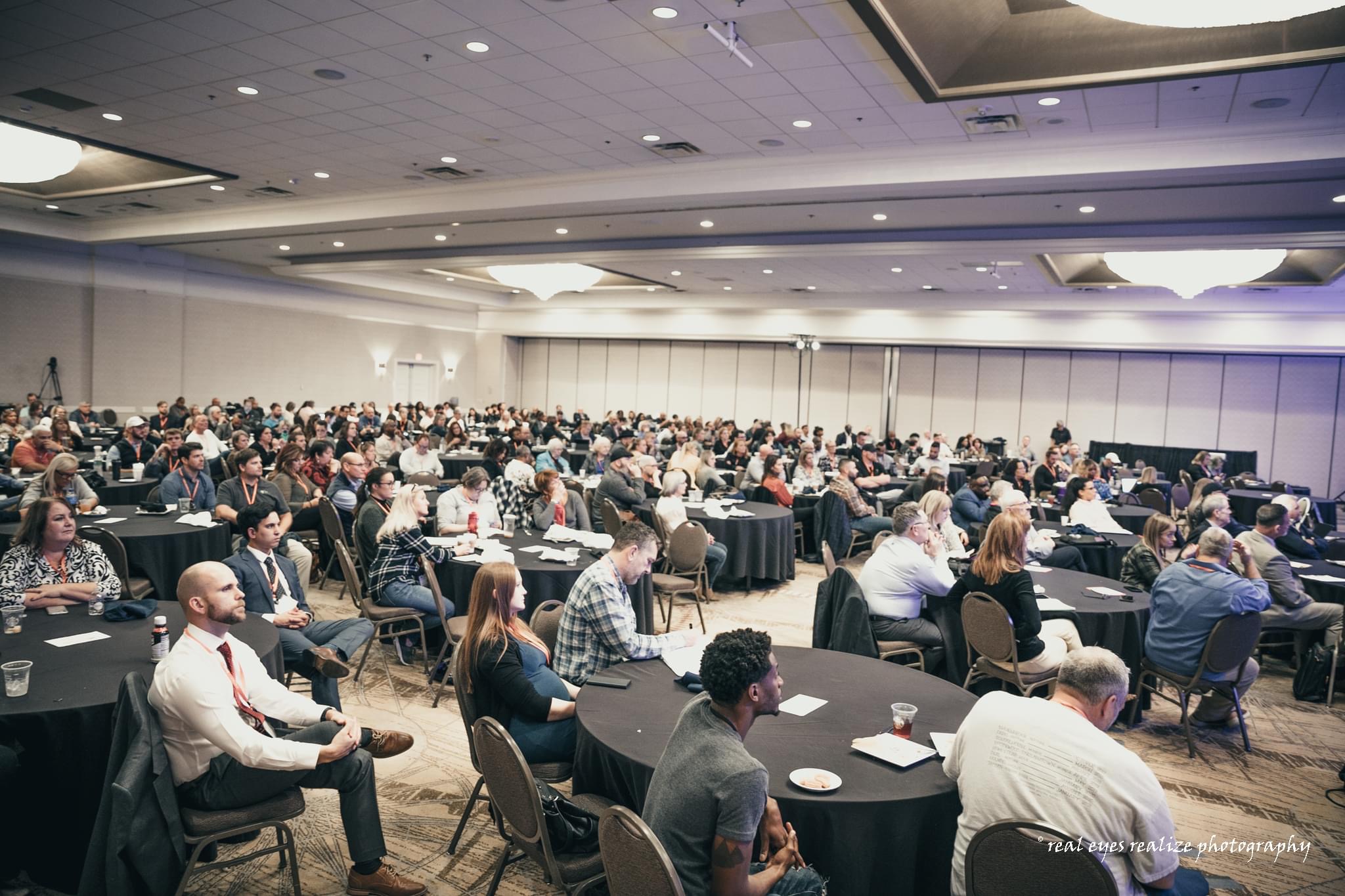



The National Alliance for Recovery Residences (NARR), founded in 2011, filled a void in addiction recovery services. Until then, there were no widely recognized best practices or quality oversight in recovery housing operations although this vital recovery service has existed since the mid-19th century. Using input from 48 thought leaders across 12 states, NARR created a nomenclature and standards for the range of peer-based housing and recovery residences. Establishing a common recovery residence language and service quality framework enabled providers and stakeholders to communicate more effectively and provide better and more accessible recovery-oriented housing and services based on the Social Model of Recovery – the opposite of addiction is connection.
“You alone can do it, but you can’t do it alone.”
Dr. Thomasina Borkman
NARR continues revising and promoting standards to ensure the quality and effectiveness of recovery residences within networks of providers called Affiliates who promulgate the application of NARR standards for certification in their state.
Shaping the Future of Recovery Residences
The Journey Begins: 1840s - A Foundation of Support
The story of recovery residences begins in the 1840s with the inception of structured living environments dedicated to aiding individuals on recovery journeys. These pioneering programs laid the groundwork for a compassionate, community-driven approach to addiction recovery.
Mid-20th Century: Expanding Horizons
The mid-1900s witnessed a significant expansion in recovery support models, with the emergence of mutual support groups and Alcoholics Anonymous (AA) houses. This era heralded a broader recognition of the vital role that social support plays in successful recovery.
The Late 20th Century: A New Philosophy Emerges
In the late 20th century, the recovery residence movement saw the formation of pivotal organizations such as Oxford House. The codification of the Social Model philosophy underscored a shift away from an almost-exclusive clinical focus towards peer-led, community-based recovery environments.
The Early 21st Century: Growth and Recognition
The early 2000s were characterized by the rapid growth of regional recovery residence organizations and a widening variety of recovery residences. This period set the stage for the next transformative development in the field.
2011: NARR Is Founded
In response to the pressing need for codification of best practice standards and quality oversight in recovery housing, the National Association of Recovery Residences (NARR) was established. We subsequently changed our name to the National Alliance for Recovery Residences in 2013. Drawing on the collective wisdom of 48 thought leaders across 12 states, NARR introduced a uniform philosophy, nomenclature and standards, marking a new era in recovery support services. The first NARR Standard was released in 2011. At the time of our founding, few states recognized or conferred benefits related to recovery residence standards adoption, except for chartered Oxford Houses.
2013 and Beyond: Standards and Ethics
With the merger with Association of Halfway House Alcoholism Programs of North America (AHHAP) in 2013, the introduction of the NARR Code of Ethics in 2017, followed by Standard 3.0 in 2018, NARR continues leading the field in enhancing the quality and effectiveness of recovery residences. These milestones reflect NARR's unwavering commitment to providing safe, supportive, and ethical residential recovery environments.
The Role of Dr. Thomasina Borkman, Dr. Lee Kastukas, Susan Binns, Susan Blacksher and William White
NARR owes much of its founding philosophy and operating principles to the social model of recovery that was first operationalized in California. The emphasis is on the importance of the social context or belonging in a community for progressive recovery (See the “Resources” page for more information). In addition, the social model acknowledges the vital role of both engagement in mutual/peer support and collaboration with the medical model. William L. White, a revered figure in the addiction recovery field, has provided invaluable insights that guide NARR's mission and activities today. His advocacy for evidence-based practices and integrated care systems has been instrumental in shaping the future of recovery residences and the field of addiction recovery services as a whole.
Today: A Growing Network
NARR's pioneering work continues as we expand the network of state Affiliates. Through continued advocacy, research, system development work and evolution of our standards, NARR’s dedication to developing recovery residence ecosystems that promote individuals access and contributions to the supportive environments they need to thrive.
Join Us in Our Mission
We invite you to learn more about our work and join us in our mission to elevate the standards of practice and increase the availability of recovery residences nationwide. Together, we can make a difference in the lives of those embarking on their recovery journeys.


